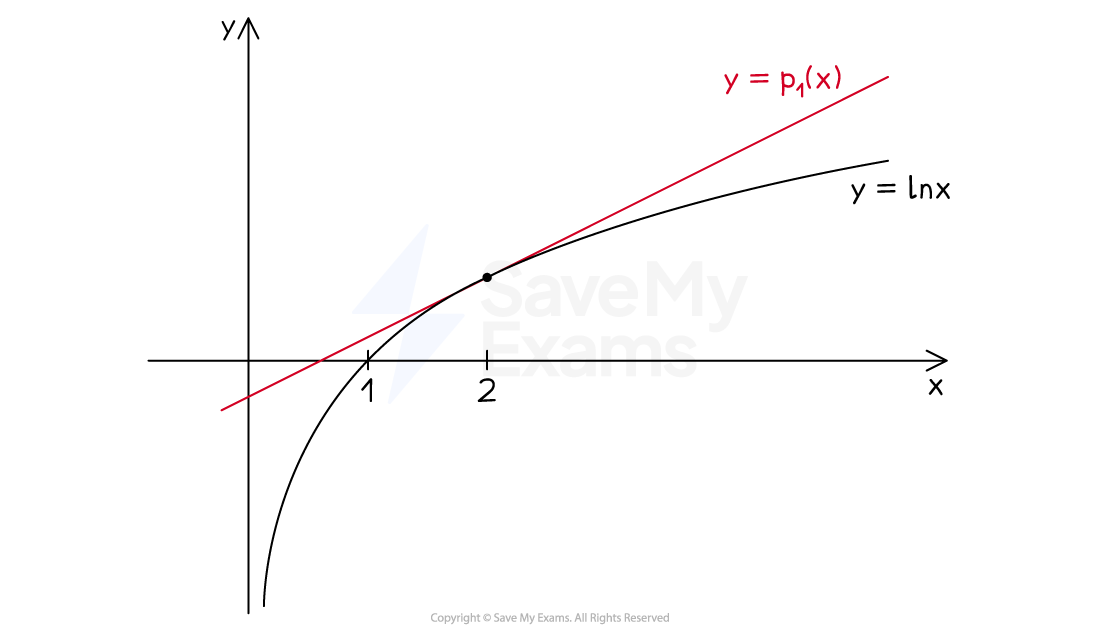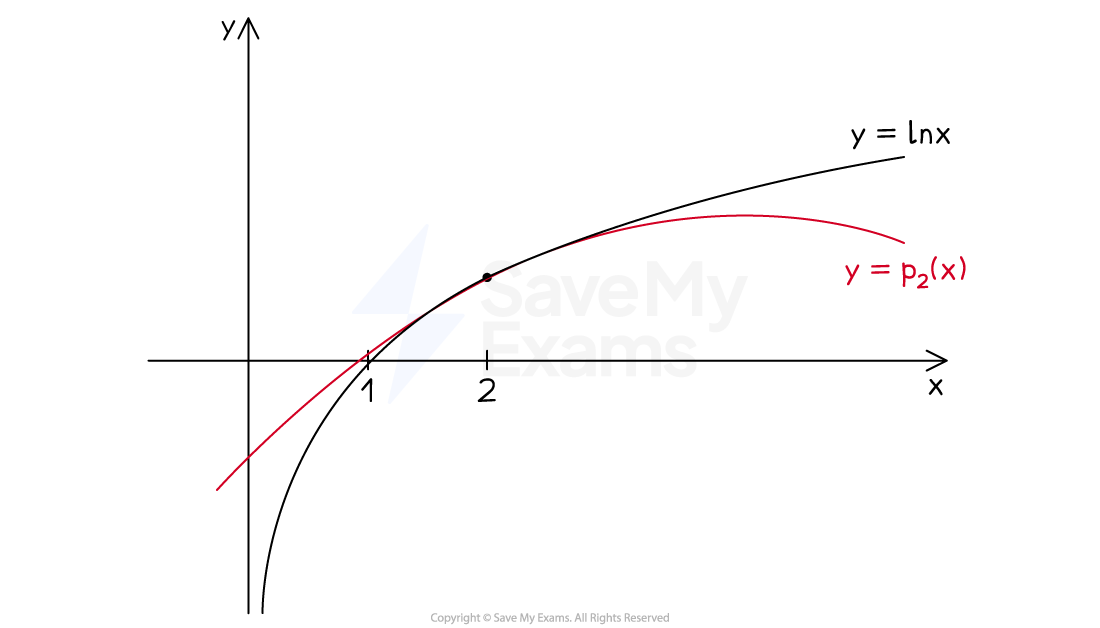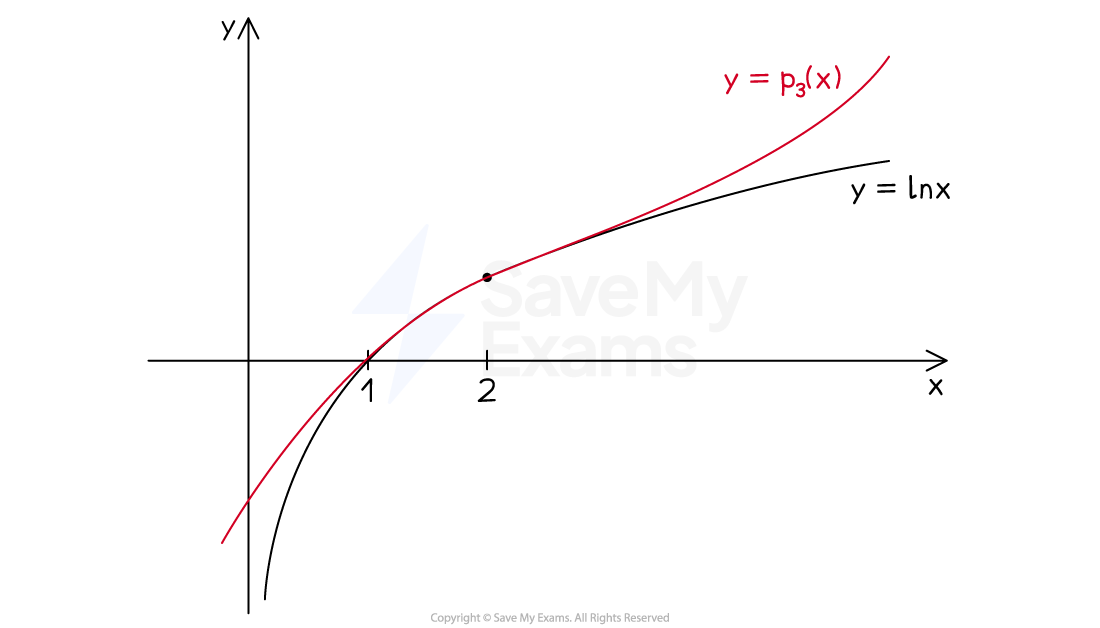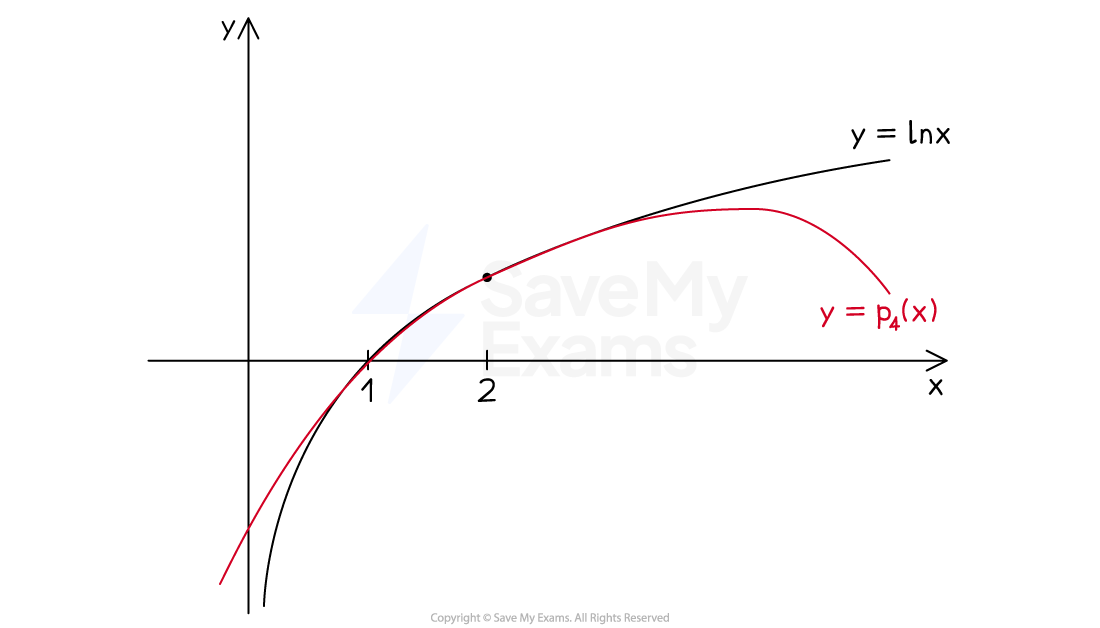Taylor Polynomial Approximation of a Function (College Board AP® Calculus BC): Study Guide
Taylor & Maclaurin polynomials
What is a Taylor polynomial approximation of a function?
A Taylor approximation about the point
is a way of approximating a function near to that point using a polynomial
This polynomial is called a Taylor polynomial
Let
be a function
If the function and its first
derivatives all exist at
, then the nth degree Taylor polynomial for
about
is
Note that
I.e. a Taylor polynomial is always exactly equal to its function at
This is the equation of a line with slope
, that goes through the point
I.e. the first-degree Taylor polynomial is the equation of the tangent line to the graph of
at the point
For example, the first few Taylor polynomials for
about
are:
The graphs of those polynomials about
and
can be seen in the following diagrams




The diagrams illustrate the following general facts about Taylor polynomials:
Their accuracy as an approximation decreases as you move away from
They become a more accurate approximation (and more accurate further away from
) if you increase the degree of the polynomial
I.e. adding additional terms in higher powers of
increases the accuracy
What is a Maclaurin polynomial approximation of a function?
A Maclaurin polynomial approximation of a function is a special case of a Taylor approximation
It is the Taylor approximation of a function about the point
I.e. if the function
and its first
derivatives all exist at
, then the nth degree Maclaurin polynomial for
about
is
Worked Example
(a) Find the Maclaurin polynomial for the function up to and including the term in
.
Recall that this is the Taylor approximation about
Use
Start by calculating the first three derivatives
Substitute those and into the formula and simplify
(b) Find the Taylor polynomial for the function about
, up to and including the term in
.
Use
Start by calculating the first three derivatives of the function
Substitute those and into the formula and simplify

Unlock more, it's free!
Did this page help you?